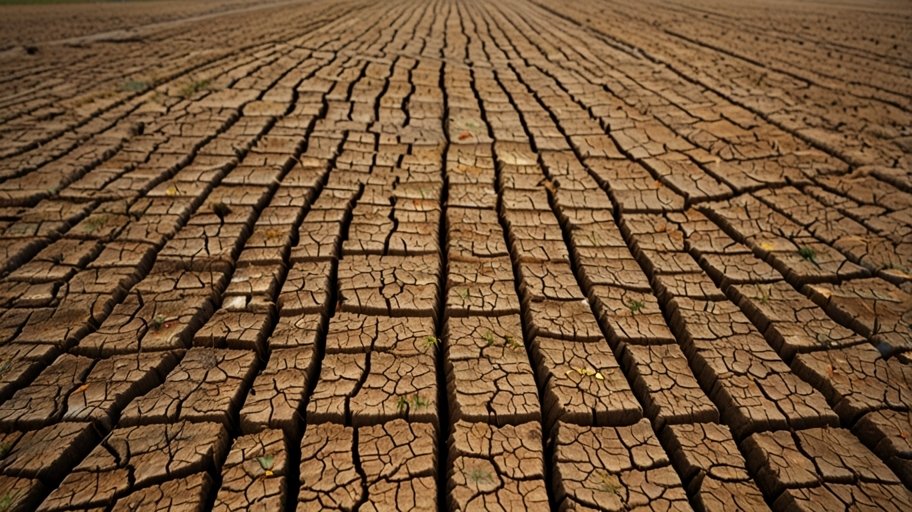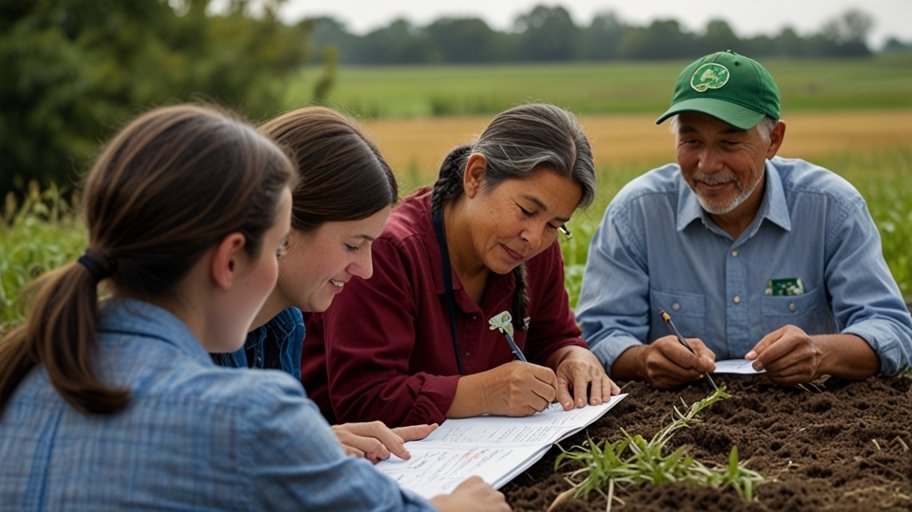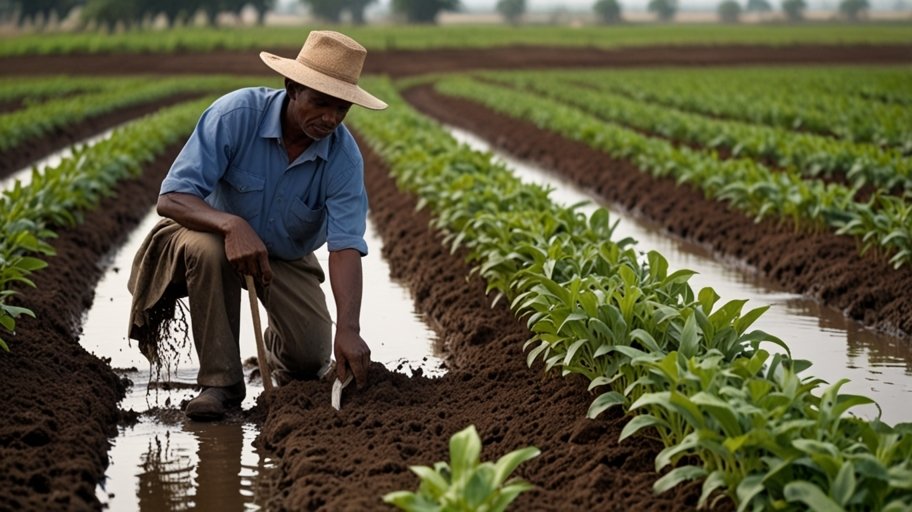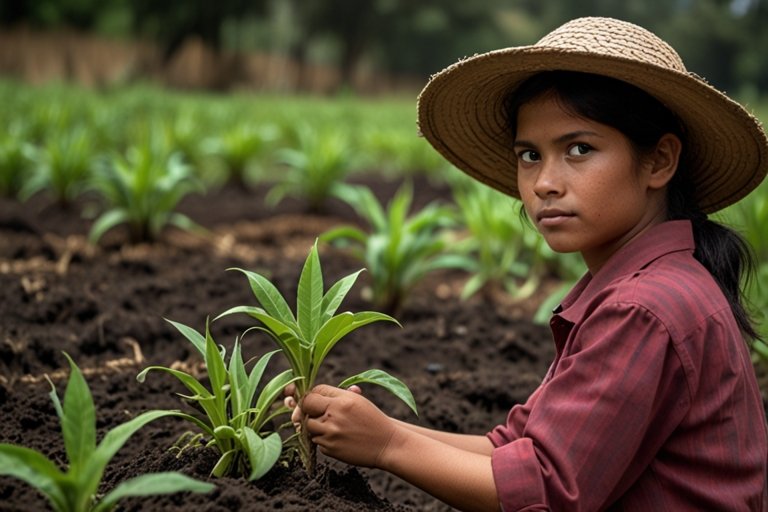Introduction
Guatemala is located in Central America and is recognized for being a region of high biodiversity as well as fertile soil. Agriculture is considered one of the most crucial elements for the economic security of this country. Being one of the countries most affected by climate change in the region, Guatemala faces more and more challenges day by day. Rising temperatures, irregular patterns of rainfall, and extreme events can be a threat to the sustainability of its agricultural systems. These environmental changes are not just effecting crop production but also sinking the social and economic lines that already prevail in the country. This paper explores how climate change impacts agriculture in Guatemala and what has been done in the light of these adverse effects.
Why Agriculture Matters to Guatemala
Agriculture is an extremely critical sector in Guatemala’s economy since it supports about 31% of its population and provides some 14% to the country’s gross domestic product. The sector is diversified as it produces coffee, bananas, sugarcane, corn, beans, and vegetables, among others. Most of the country’s exports, specifically coffee and bananas, are dependent on agriculture. As such, the sector is sensitive to the international market.
Climate Change and Effects on Agriculture in Guatemala_e0485488_20523545.jpg
More importantly, agriculture is a critical factor for food security for most people, especially in the rural areas where subsistence farming prevails. Maize and beans are staple crops that are grown by smallholder farmers in every corner of the country. These crops are culturally important and also form the mainstay of many low-income households’ daily consumption.

However, despite the economic importance of the agricultural sector, it remains highly vulnerable to the impacts of climate change. During the last few decades, increases in temperature, changes in precipitation patterns, and higher frequencies of extreme weather have begun to seriously affect not only the productivity but also the sustainability of agricultural practices in the country.
Climate Change in Guatemala
According to the Global Climate Risk Index, Guatemala is in the list of nations most vulnerable to climate change. Its diversified topography-from low-lying coastal lands to mountainous territories-exposes it to a range of climate-related risks. These are
Increasing Temperatures: There have been increases in average temperatures around the country. Such a phenomenon threatens crop yields especially where the crops are sensitive to high temperatures such as in cooler higher altitudes such as the case with coffee that is tolerant of cooler climate and cool higher altitudes.
Alteration of the Patterns of Rainfall: The timing and spacing of rainfall are no longer predictable. The country has two seasons namely dry season from November to April and wet season from May to October. Climate change brings along these seasons with wet seasons shorter and more intense resulting in increasing floods. Even offline, droughts have become longer and more severe during the dry season.
Extreme Weather Events : Hurricanes, tropical storms, and landslides are among the common extreme weather events in Guatemala. It can destroy crops, damage infrastructure, and cause potential displacements.
Rising Sea Levels : This spells danger for coastal areas in Guatemala as it introduces saltwater into their freshwater systems and agricultural lands, thus impeding soil quality and its available freshwater for irrigation.
Effects of Climate Change on Agriculture in Guatemala
- Crop Yields Impacts
The most direct effect of climate change on agriculture in Guatemala is the result of lowered crop yields. Corn and beans are still among the staple crops for many rural households, growth of which is highly sensitive to changes in temperature and rainfall. Increased droughts and shortages of rainfall during the dry season have led to crop failure, often in the “Dry Corridor,” an area that covers parts of Guatemala, Honduras, El Salvador, and Nicaragua. The farmers here often face severe food shortages, as their crops are often destroyed.
It also has coffee, which is another crop for export by Guatemala. Coffee plants thrive the best in the specific temperature range of 18°C and 23°C. With this rise in temperature, the regions suitable for coffee farming have become too hot for the plant, and they are moved to higher altitudes that are mostly unsuitable for mass farming. This, aside from the change in temperature and humidity, increases diseases like coffee leaf rust (Hemileia vastatrix) that may cause significant devastation for coffee farms.

- Soil degradation
Erratic rainfall and deforestation are the major causes of soil degradation in Guatemala. Droughts reduce the moisture levels in the ground, making it difficult for the crops to grow. High levels of rainfall lead to soil erosion, particularly in areas where the trees have been chopped down for farmland or logging purposes. The loss of fertile topsoil greatly reduces agricultural output and increases the vulnerability of the land to further climatic activities.
Intensive use of chemical fertilizers and pesticides, commonly applied as a response to decreased yield, has also contributed to degrading the quality of soils. This cycle may eventually lead to low fertility levels, high inputs, and continued yield decline.
- Water Scarcity
Water availability has now become a problem for farmers in Guatemala. Many farming areas have been deprived of sufficient water supplies by droughts, especially within the Dry Corridor. Rivers and lakes are drying up, and levels of groundwater are dropping as a result of over-extraction. The rising temperature and the reduced availability of water make it difficult to farm.
Competition for water between agricultural, industrial, and domestic use is, however, aggravating. The smallholder farmer-to-date embraces rain-fed agriculture. Most of them have little or no access to modern irrigations means and methods. As the water resource becomes scarce, water resource competition will probably lead to fights over the same, which will sharpen social unrest in rural areas.
- Pests and Diseases
Climate change modifies the distribution and prevalence of agricultural pests and diseases in Guatemala. Thus, for example, increased temperatures, in addition to relative humidity, provide excellent conditions for pests such as the coffee borer beetle and disease such as coffee leaf rust. These will result in tremendous crop loss, thereby cutting the farmer’s income, which eventually poses a risk to food security.
For instance, coffee leaf rust devastated much of the coffee industry in Guatemala early in the decade; losses were estimated at $1 billion across Central America. Affected farmers often had little choice but to leave abandoned or switch to competing crops, which often comes at the cost of significant economic and social hardship.
- Food Security and Poverty
Impacts of climate change on agriculture directly translate to food security in Guatemala. Reduced crop yields and increased crop failures lead to chronic food insecurity for most rural households. For subsistence farmers, crop failure means no food for their families. They have to buy food at higher prices, which makes them even poorer.
In addition, the reduced agricultural income amplifies poverty in the case of marginalized groups, especially within indigenous peoples whose poverty levels are already drastically high. More and more, climate migration is seen, as people who lose out on means of generating a living from agricultural activities often shift to the urban city or even relocate to different countries, like the US.
Combining adaptation and mitigation, these impacts must be addressed to climate change in agriculture in Guatemala. Thence, even if some has been achieved, much more remains for the safeguarding of agricultural systems and food security in the country.
- Agroecological Practices
Agroecology is a promising adaptation to climate change through emphasizing on sustainable farming practices in harmony with the environment. Techniques used include crop diversification, agroforestry, and organic farming. Crop intercropping maize with the Nitrogen-fixing crop like beans improves soil fertility without the need for chemical fertilizers.
Agroforestry or the integration of trees into agricultural landscapes also contributes to soil erosion prevention, diversity enhancement, and water retention in the soil. All these practices enhance resilience in relation to climate change while also boosting the production of additional sources of income for farmers through timber, fruits, and other forest products.
- Climate-Resilient Crop Varieties
Yet another strategic approach is the development and promotion of climate-resilient crop varieties. Improved maize and bean varieties that have a longer shelf life in the event of drought have been developed. Additionally, there are ongoing efforts to develop resistant coffee varieties to the disease coffee leaf rust and those that can grow well at higher temperatures.
These high-yielding crop varieties have the ability to help a farmer maintain productivity even when climatic conditions are adverse.
However, the challenge arises in letting smallholder farmers avail themselves of these varieties; there are not enough financial means to purchase seeds or other new technologies.
- Irrigation and Water Management
Better irrigation systems and water management practices are basically essential for the adaptation of increased water scarcity in Guatemala. For instance, harvesting rainwater, employing drip irrigation, and developing small-sized reservoirs will ensure sufficient water for farmers during dry periods. Water farming will also be promoted in relation to mulching and no-till farming to conserve soil moisture and reduce irrigation needs.
Better water governance at the national level is needed to successfully manage competing demands for water resources. This includes regulation of water extraction, investment in infrastructure to store and distribute water, and promotion of equitable access to water for all sectors of society.
- Financial Support and Insurance
Access to financial resources is essential for farmers to invest in adaptation measures. Supplying microfinance institutions and government programs offering loans, grants, or subsidies can help promote climate-smart practices and technologies among smallholder farmers. Agricultural insurance that protects farmers against the financial risks of crop failures due to extreme weather events also represents a safety net for vulnerable households.
Funding and technical assistance from international organizations such as the World Bank and the United Nations are supporting climate adaptation efforts in Guatemala. The initiatives aim to make rural communities more resilient to the effects of climate change while making them less vulnerable to these changes.
- Education and Capacity Building
Long-term resilience builds through increasing the capacity of farmers to adapt to climate change, and a great way through extension services, farmer field schools, and community-based organizations in disseminating knowledge of climate-smart agriculture. The focus of training programs could include sustainable farming techniques, water conservation, and pest management.
Also, growing awareness about the impacts of climatic changes and adaptation need for the activation of efforts at the local community level would be essential. Providing such farmers with knowledge and training on dealing with the climate issue can ensure the sustainability of agriculture for the next generation.

Conclusion
Climate change threatens agriculture in Guatemala, with deep impacts on food security, poverty, and economic stability. The effects of increased temperatures, irregular rainfall, and extreme weather events are already manifesting themselves throughout the country, especially among smallholder farmers who depend on agriculture for their livelihoods. But by adopting sustainable farming, developing climate-resilient crop varieties, and improving water management, more resilience can be built in the agricultural sector.
It really has to be quite holistic and integrate aspects from and between the government agencies, international organizations, private sector, and local communities. By investing in adaptation and mitigation strategies, Guatemala can safeguard its agricultural systems and have a more assured future for its people in the face of a changing climate.
